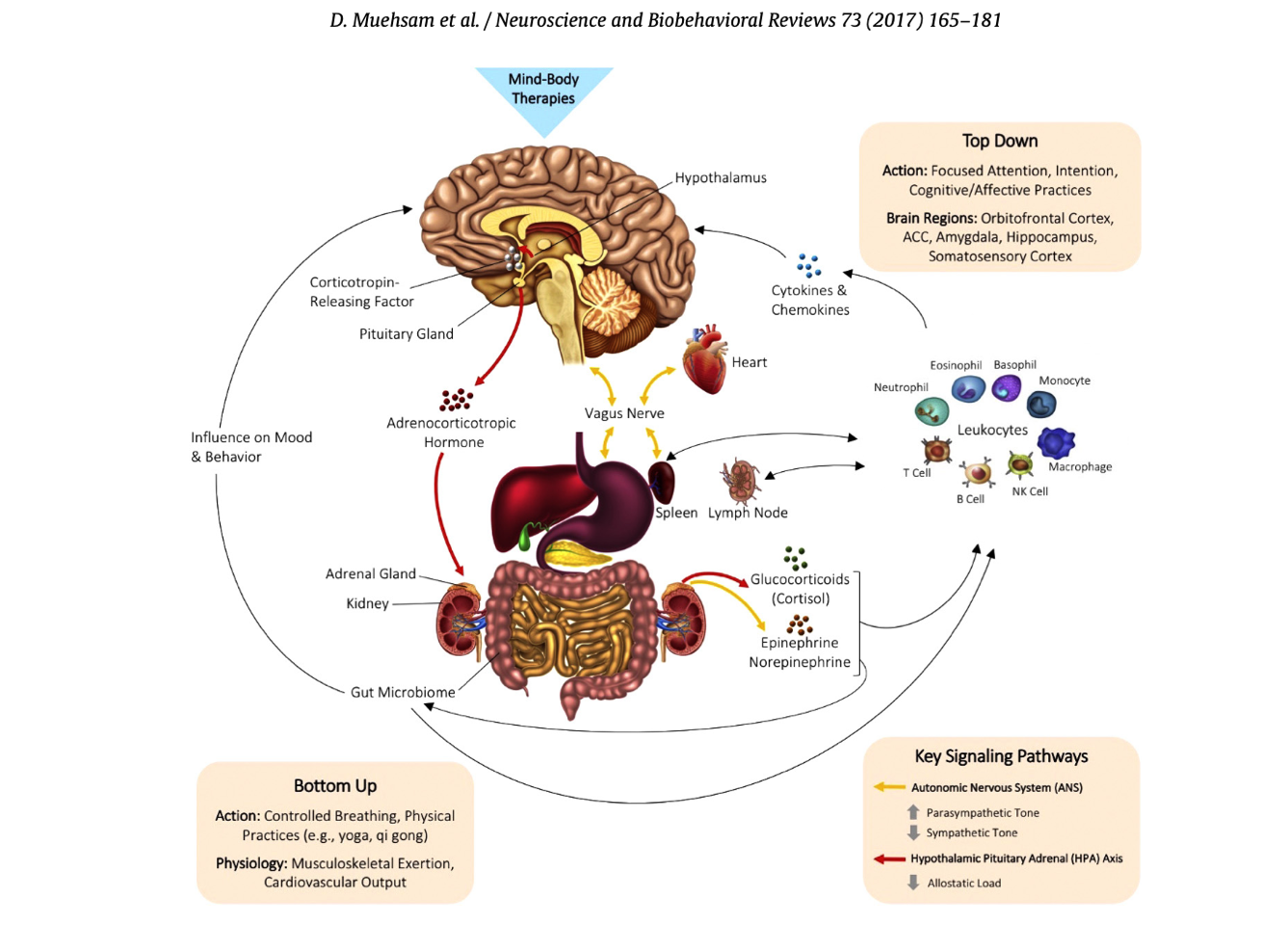Trauma Pathways
The body content of your post goes here. To edit this text, click on it and delete this default text and start typing your own or paste your own from a different source.
Like mudras, acupuncture and acupressure tap into certain points of the body to activate connections between the brain and the body. In ancient Chinese medicine, the insertion of acupuncture needles along certain energy points is used to improve and balance Qi, or the life force and energy circulating through the body. One study reported that acupuncture increased levels of endorphins and serotonin, hormones that lower pain perception and increase feelings of well-being. Acupuncture has also been shown to reduce PTSD severity and improve depression, pain, and other aspects of physical and mental health function. Acupressure targets points on the body without the use of needles.
Vibrational medicine practices tap into the flow of energy within the body. Cells throughout the body are in communication with each other and with the brain. Practices emerging from ancient Chinese medicine and ancient Indian Ayurveda, like acupuncture, acupressure, and yoga, can help reconnect the body and mind to facilitate healing.

Mind-body therapies include practices such as yoga, meditation, mindfulness, qi gong, and types of controlled breathing. Many studies have shown that mind-body therapies can modulate the immune system/inflammatory responses and brain function related to attention, emotion regulation, and learning. Mind-body therapies facilitate stress reduction, which can improve health outcomes by lessening allostatic load, reducing harmful effects to the immune and nervous systems. Mind-body therapies, over time, can combat the effects of chronic stressors. The image below illustrates the neurophysiological systems impacted by mind-body therapies.
Recovering from trauma is not simple or easy. However, with dedication, practice, self-love, and compassion, people who have experienced trauma can heal and live a fuller life. Critical to healing from trauma is relying on others for support. This may be difficult for those who have experienced trauma, but if there are people with whom you can be in community, perhaps others who have experienced trauma or a trusted healthcare provider, social connection is key. Dr. van der Kolk reviews steps for trauma recovery. These steps include finding ways to become calm, learning to maintain that calm in the face of stressors and triggers, finding ways to live life fully, be in the present, and engage with others, and being authentic and truthful with yourself (not keeping secrets, including how you have managed to survive trauma). These steps overlap and do not occur in a particular order. van der Kolk also discusses the importance of talking openly about trauma, learning to inhabit your body, and self-leadership to reconnect fragmented parts of yourself. To move through these steps and heal, ancient medicine and healing practices provide us with a wealth of knowledge.
Prepared by: Allison Fischman, MPH Candidate
